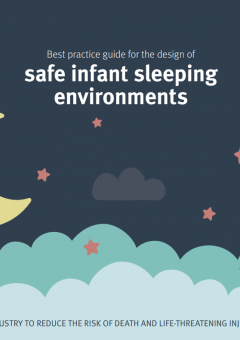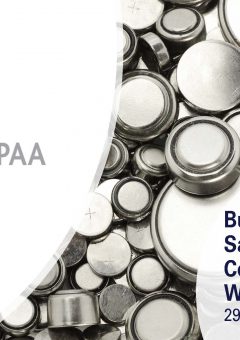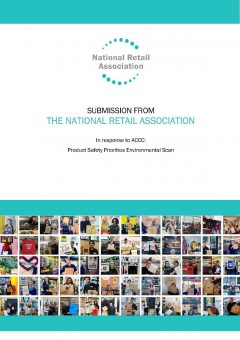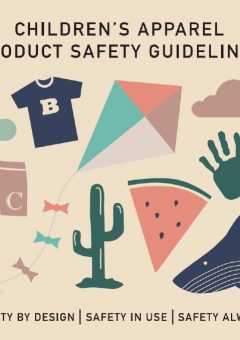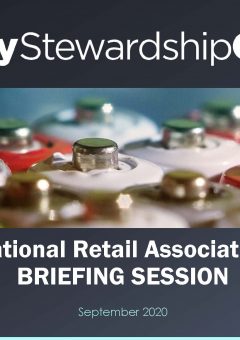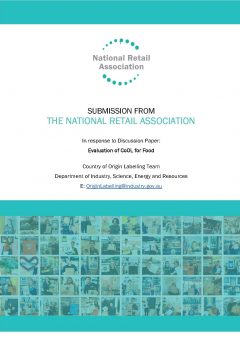Related News
Product Safety & Standards
There’s one common expectation among shoppers – that the products they purchase are safe and suitable to use.
Unfortunately, unsafe products cause two deaths and 145 injuries in Australia every single day.
This includes children swallowing button batteries or climbing furniture that topples over on them, clothing and electronics catching fire, and contaminated food and medicine making people sick.
As retailers, ensuring that we are compliant with Australia’s system of mandatory and voluntary product safety standards is a necessary but often complex task. For each of the 15,000 types of products currently sold by Australian retailers, there are multiple brands, and these constantly evolve according to new fashions, styles and technology.
Technical standards and product safety is an important duty of care for retailers, yet it amounts to volumes of specialised information to absorb and apply. The National Retail Association understands the risks and works with retailers to make product safety a clear and practical priority.
-
Product recalls
Product recalls
Product recall situations can happen to any business. Consumers expect faulty products to be removed from the marketplace quickly and effectively.
If a product needs to be removed from the marketplace, it’s too late to know whether your suppliers, wholesalers and stores are prepared to act quickly and efficiently. You need to understand what your partners need and what you need from them.
The Australian Competition & Consumer Commission (ACCC) provides resources via the Product Safety Australia website to help businesses prepare for a recall, and publishes all currently recalled products across Australia.
- Guide to conducting a recall >
- Recall advertising templates >
- See all current ACCC product recalls >
All retailers, importers and suppliers are urged to sign up for product recall notifications as posted on the Product Safety Australia and Food Standards Australia New Zealand recalls sites. Recalls of similar products can be a sign to check your own merchandise.
Industry advice
- Button batteries
-
Toppling furniture & TVs
Toppling furniture and televisions
Anchor them for child safety
Children like climbing things and never think of the possible consequences, especially if there is something up high that they want. However, the weight of furniture like bookshelves and entertainment units is enough to crush them.
Sadly, at least 22 children under the age of nine years have died in Australia since 2001 in accidents like this.
While most parents are aware of certain risks and furniture like bookshelves have equipment and instructions for anchoring them to a wall at purchase, other items such as chests of drawers, sideboards and TV stands often do not come with instructions and equipment and are not considered hazardous until accidents occur.
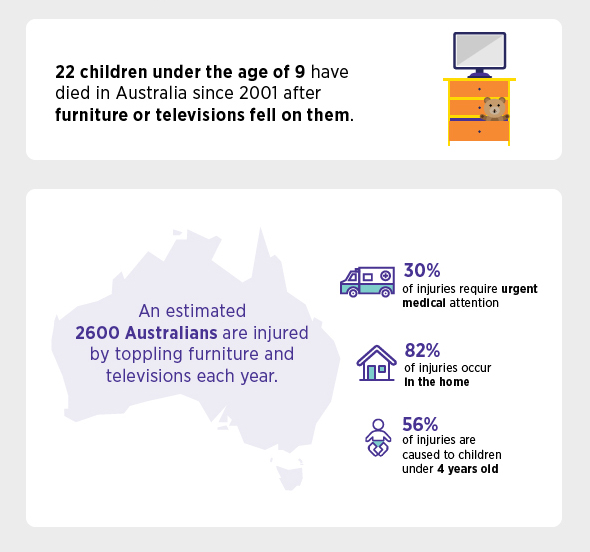
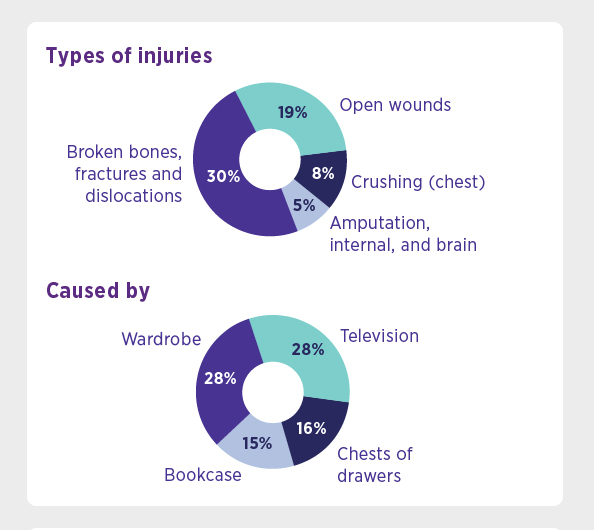
Source: https://www.productsafety.gov.au/news/anchor-furniture-to-stop-deaths-and-injuries
Safety tips
- Attach, mount, bolt or otherwise secure furniture and televisions to walls and floors.
- Put locking devices on all drawers to prevent children opening them and using them as steps.
- Do not put heavy items on top shelves of bookcases.
- Discourage small children from climbing on furniture.
- Do not put tempting items such as favourite toys on top of furniture that encourages children to climb up and reach.
- Do not place unstable furniture near where children play.
Buying tips
- Look for furniture that comes with anchoring devices. If it doesn’t include them, ask whether they’re available in the store.
- Purchase low-set furniture or furniture with sturdy, stable and broad bases.
- Tell retail staff if you have small children in your home so they can advise you about safer options.
- Ask if your retailer applies the Best Practice Guide to their product range.
Best practice guide
In an effort to educate consumers, retailers and manufacturers about the dangers of toppling furniture, and the steps that should be taken to prevent this, the National Retail Association Technical Standards Committee released a Best Practice Guide for Furniture and Television Tip-Over Prevention in 2016.
The Guide was developed by the National Retail Association, in consultation with a range of businesses and with support from the ACCC, the Australian Furniture Association (AFA) and the Consumer Electronics Suppliers Association (CESA). Other consumer product associations such as the Australian Furniture Associations and the Consumer Electronics Suppler Association (for televisions) support the NRA in this initiative.
Key recommendations
The Guide recommends that suppliers of furniture and televisions:
- develop a company policy that outlines systems to address tip-over hazards associated with their products and states their commitment to support the policy
- affix to the products (or supply with them) anchor devices that are fit for the purpose
- provide consumer information about tip-over hazards and prevention that includes warning labels
- in user / assembly instructions
- on any packaging, including for flat-packed furniture, and
- on the product
- develop and maintain staff training programs and manuals about furniture and television consumer safety initiatives
- provide consumer literature illustrating the various means of anchoring furniture and televisions
- display warnings in the vicinity of tall furniture and televisions strongly advising consumers to use anchors to secure them to a wall or other building structure
The guide focuses on improving furniture and television stability through design, pre-installing anchor devices and educating consumers at point of sale. It covers products such as chests of drawers, wardrobes, shelving as well as televisions.
The best practice guide contains advice on:
- furniture design
- roles for manufacturers, importers and retailers
- types of anchoring devices
- effective user instructions
- consumer education
Using this guide, retailers can work with their suppliers to provide safer products. But with this consumer safety issue, consumers also have a key role to play. As well as building safety into products, retailers who follow the best practice guide will help educate consumers on the importance of anchoring their product once they get it home.
DOWNLOAD THE BEST PRACTICE GUIDE -
Product labelling
Product labelling
Labels are a key feature of most products. They help to market the product, allow customers to tell it apart from the competition, and give important messages including ingredients, instructions and uses. Manufacturers and retailers need to be aware of their obligations under various legislation affecting product labelling.
What you must include in your label
When you design a label, make sure it complies with the Competition and Consumer Act 2010 (CCA), which says you can’t give false, deceptive or misleading information to customers.
The Act also requires that labels are used to give information to consumers, such as:
- the mandatory consumer product information standards under the CCA
- industry specific regulations, such as the Food Standards Code
- labels required by customs for some imported products under the Commerce (Trade Descriptions) Act.
Specific labelling laws
Pre-packaged goods labelling
Label designs for pre-packaged goods must also comply with the National Trade Measurement Regulations 2009, which include requirements for:
- the position, size and format of measurement information
- for articles packed in Australia, the name and address of the packer.
For more information, read the Guide to the Sale of Pre-Packaged Goods on the National Measurement Institute website.
Food labelling
- Use by and best before dates
- Allergen labelling
- Kilojoule labelling (also applies to menu labelling in some areas)
Country of origin labelling
Country of origin labelling is a notice or label on products to let your customers know what country a product came from.
In Australia:
- misleading country of origin labelling is prohibited
- certain products must have country of origin labelling, such as food.
Country of origin food labels
If you sell food in retail stores in Australia, new country of origin food labelling laws apply to your products from 1 July 2016.
Learn MoreAustralian made claims
If you claim your products originated from Australia, you need to be aware of your obligations under Australian Consumer Law (ACL). Incorrect Australian made claims can lead to penalties, so it’s important to get it right
To help ensure you’re making these claims correctly, download the Australian Competition and Consumer Commissions (ACCCs) Country of origin claims and the Australian Consumer Law guide.
Chemical products labelling
If your business is in the chemicals or plastics industry, read the Chemicals Business Checklist on the Personal protection and chemicals page for labelling and packaging requirements that apply to your products.
What to do…
- Read about trade descriptions and Labelling for imports/exports on the Australian Border Force website
- See Country of origin food labelling page for more information on the new food labels
- Download the Country of origin claims and the Australian Consumer Law guide from the ACCC website
- Read Trade measurement page if the price of your goods is based on measurement of quantity or quality
- Contact the ACCC small business helpline on 1300 302 021.
-
Children's apparel safety
Children’s apparel safety
Children’s need for exploration and challenge drives them to use products in new and different ways, unfortunately, this also exposes them to multiple hazards such as choking, strangulation, entrapment, and chemical toxicity. Children are also unaware of cause and effect and are substantially less cautious than adults in relation to hazards and therefore products should be safe for their intended use and foreseeable conditions of misuse.
Product Safety Guidelines

The National Retail Association Technical Standards Committee group of quality assurance and product compliance specialists have released the second revision of the Children’s Apparel Product Safety Guidelines.
This industry guide is designed to assist manufacturers, importers, suppliers, retailers and regulators to understand, identify and mitigate critical safety hazards associated with children’s apparel designed, marketed and intended for children from birth up to and including 14 years of age.
The guidelines were developed in consultation with key stakeholders including industry suppliers, retailers, regulators, testing laboratories and consumer associations.
The guide provides easy to navigate indexed sections that cover the following hazard topics:
- Risk assessment modelling
- Chemicals – restricted substances
- Laboratory test methods
- Minimising product risks
- Labelling
- A comprehensive section on cords, drawstrings, tied belts, sashes.
- Trims worksheets covering 11 different trim categories
About the Second Revision
The revision now only includes apparel and provides readers with a broad range of information to build safety considerations into design, from concept to finished articles. The guide uses a variety of existing Australian and international standards and reference points to provide a number of benchmarks and increased clarity on risk management principles. The scope of the cords/drawstring and trims section has also been broadened and now includes visual diagrams to explain and demonstrate specific rules that should be applied to address hazards.
DOWNLOAD GUIDELINES
Product Safety Committee
The NRA Product Safety Committee (NRA-PSC) brings together quality assurance and product compliance specialists from multiple retail categories to discuss challenges and solutions in terms of product safety and compliance.
This group provides an opportunity for retailers to:

- Keep up to date with changes in the technical standards applying to your products
- Learn from your peers in other Australian retail chains and stores about practical problems and solutions
- Contribute to and formulate national policy and standards as a Standards Australia nominating committee
- Engage in the dialogue between the retail sector and government and regulators about the issues concerning your business, such as product recalls and injury reporting
- Attend presentations on topical issues from guest speakers from industry, regulators and suppliers
- Network with other product safety professionals and specialists in your field of expertise
Contact our team

David Stout

Ebony Johnson


